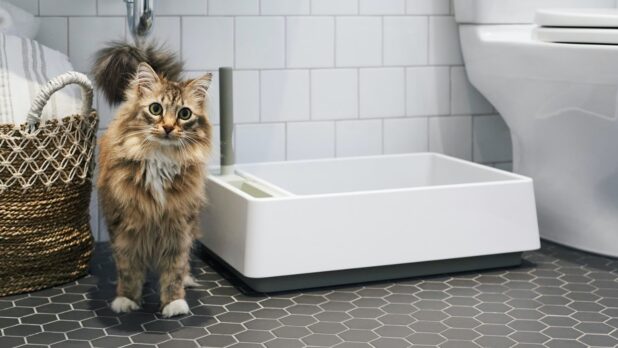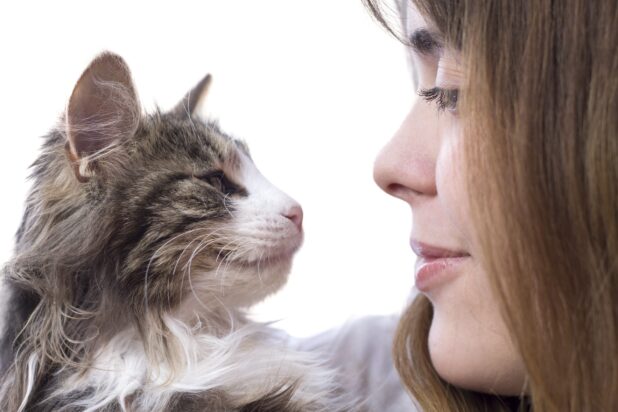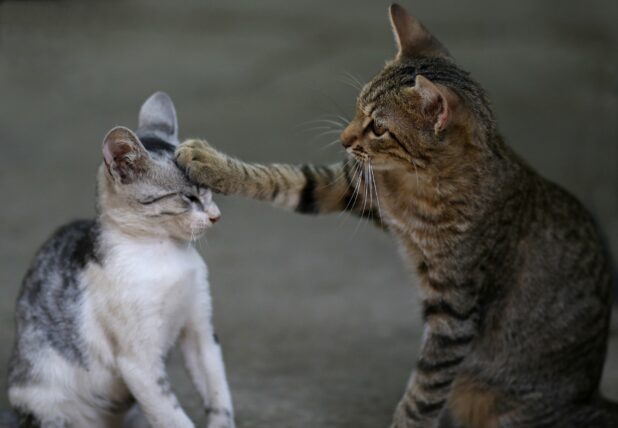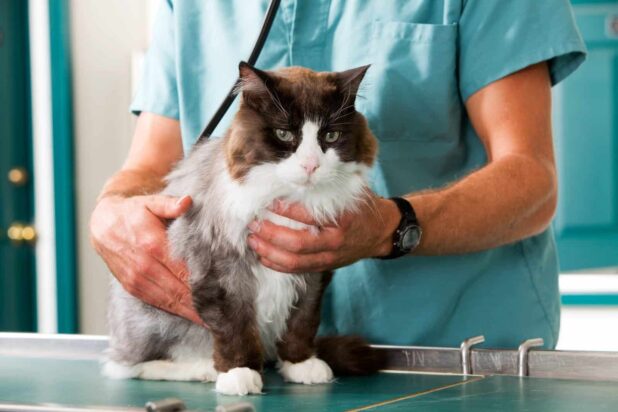Cats are wonderful family pets, and many go their whole lives with few problems or behavioral challenges besides having a little bit of attitude. Other cats, however, regularly present vexing behavioral problems that can leave their owners frustrated – and if that sounds like your cat, you’re not alone.
These three issues are among the most common behavioral challenges seen in pets, and the good news is that most have straightforward causes and solutions.
Here’s what you need to know about your cat’s unexpected and upsetting behaviors.
Table of Contents
1. Not Using The Litter Box

Most pets learn to use the litter box when they’re just a few weeks old, basically as soon as they learn to control their own bodily functions, and unlike dogs, they don’t really need to be taught what to do.
Sometimes, though, cats who have long used a litter box without any problem suddenly start urinating and defecating elsewhere, causing mess, damage, and frustration. So, what should you do about it?
When dealing with litter box problems, there are a few issues you’ll want to address first:
- Is your cat declawed? Though it’s illegal in some areas and many vets refuse to perform the procedure, some people do still declaw their cats and, if your pet was surrendered to a shelter, it may have been done by a prior owner.
Unfortunately, declawed cats often have problems using the litter box because of pain in their feet and an increased risk of arthritis. If you suspect this is the problem, have a veterinarian check their feet and legs for signs of pain and consider using a box containing puppy pads instead since the texture won’t cause pain.
- Have you made any changes? Cats can seem tough and aloof, but they’re quite sensitive to change. If you’ve changed the type of cat litter you use, moved their litter box to a new location, or had a major disruption in your home like the birth of a new child, your pet may stop using the litter box. In these cases, do what you can to normalize the situation – switch to the old litter, put down additional litter boxes, and give it time, as things will go back to normal with patience.
- How old is your cat? Older cats may become incontinent due to health problems or because they’ve developed arthritis and struggle to climb into their litter box. Getting a lower, wider box can help older cats be successful in using the litter box.
- Is there a pattern? Does your pet go to the bathroom in the same spot every time instead of using the litter box? Treat the area with an enzyme cleaner available from Homes Alive Pets to remove the scent and place an additional litter box in that spot – wherever it is. Your pet is expressing a clear preference and this is a simple solution.
- None of the above? If none of these factors seem to be the problem for your cat, and even if you think one of these problems might be at play, get your cat a vet exam. They may have a urinary tract infection or be suffering from urinary crystals and require treatments.
2. Cat Too Chatty

Some pets make a lot of noise. These sounds are known as vocalizations and they have a range of causes, some of which are easily managed and some of which you may need to learn to deal with.
First, while most cats are American Shorthairs, a designation that is not so much a breed as a general descriptor, certain specific breeds and cat characteristics are prone to being more talkative.
These include Siamese cats, who are known to have a lot to say, as well as many tortoiseshell and calico cats. Torties and calicos aren’t distinct breeds, but they seem to acquire their chattiness along with their coloration!
Certain types of vocalization demand closer attention than others. In older cats, excessive, new howling can be a sign of senility and may come with other behavioral changes. Daytime howling in cats may also be a sign of pain and should be evaluated by a vet.
Unfortunately, in many cases, frustrating nighttime howling may just be a sign of boredom or even that your pet is playing; a “hunting” cat may want to show you what they’ve caught, even if it’s just their favorite toy. Remember, cats are crepuscular, meaning they’re most active at dawn and dusk but some will extend their hours a bit to include some very noisy midnights.
3. Inter-Cat Aggression

If you have multiple cats, you may find they express a variety of different relationships to each other. Some are the best of friends, some ignore each other, and some can be a bit hostile, especially if they’re hungry. However, if your pet is behaving especially aggressively towards another pet in the house, there are a few things you may need to address.
- Is one cat a newcomer? Introducing a kitten can be pretty easy since they are almost always comfortable with other cats, but introducing older cats can be fraught and may take a while. Keep pets separated and engage in scent swapping, where you exchange items that have been with one cat with the other, allowing them to get used to each other’s scents. As time goes on, introduce them at a distance while offering a high-value treat like boiled chicken, tuna, or a favorite treat.
- Are male cats neutered? It’s should be spayed and neutered for a number of health reasons, including cancer prevention, but unneutered male cats tend to be more aggressive. Luckily, it’s never too late to neuter your cat, so schedule that procedure today!
- Is one cat a new mom? Mama cats, as well as cats who are about to give birth, can be very protective and may lash out at other pets, as well as towards humans who they otherwise like. This is perfectly normal, but it’s also a sign that they might like a little privacy while they take care of their babies. As their babies get bigger and more independent – and as mom’s hormones settle down – this behavior will stop.
While cats with mild aggression can typically handle the issue themselves, cats should never be allowed to handle severe aggression independently. Letting pets fight it out won’t teach them anything or settle the problem, but it can lead to serious injury and more fights down the line.
Always See A Vet

Any time you see a major behavioral change in your pet, the first thing you should do is check with your vet. Basic laboratory testing can often detect treatable health issues and quickly resolve the problem.
Your vet may also be able to recommend products like calming sprays and plug-ins, medications, or supplements that can help with problematic behaviors. Remember, your vet is your closest ally, so don’t be afraid to contact them when you need help.
 World Magazine 2024
World Magazine 2024






